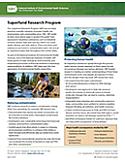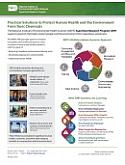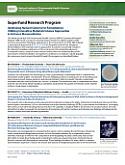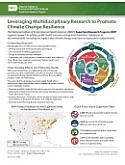Superfund Research Program
Introduction
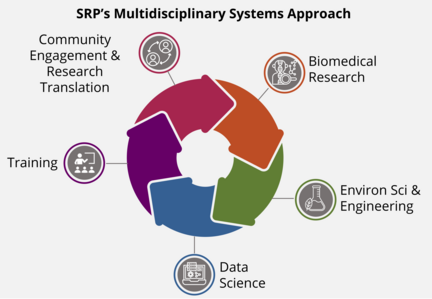
The NIEHS Hazardous Substance Basic Research and Training Program (Superfund Research Program [SRP]) provides practical, scientific solutions to protect health, the environment, and communities. As part of NIEHS, an Institute of the National Institutes of Health, SRP works to learn more about ways to protect the public from exposure to hazardous substances, such as industrial solvents, arsenic, lead, and mercury. These and other toxic substances are found in contaminated water, soil, and air at hazardous waste sites throughout the United States. SRP funds university-based grants on basic biological, environmental, and engineering processes to find real and practical solutions to exposures to hazardous substances. These activities complement the work of the U.S. Environmental Protection Agency, the Agency for Toxic Substances and Disease Registry, and other federal and state agencies.
Using a variety of funding mechanisms, the SRP supports research at colleges and universities across the United States, including collaborations at over 100 institutions. The interactive map on the Where We Work page shows SRP grant recipients and the hazardous waste sites where they conduct research or community engagement activities.
The SRP has a strong training component, supporting many outstanding graduate students and postdoctoral researchers. Finally, the Program funds a variety of outreach efforts to facilitate the translation of the Program's research findings to the communities and organizations most concerned with hazardous substances, with the ultimate goal of improving public health.
NIEHS Superfund Research Program Overview Video (2023)
History and Mandates
The Superfund Amendments and Reauthorization Act (SARA) of 1986 created the SRP within the National Institute of Environmental Health Sciences (NIEHS) to provide a broad university-based research program to address scientific uncertainties facing the national Superfund program.
SARA established a broad mandate (52KB) and set of goals for NIEHS to pursue within the SRP. These mandates include the development of:
- Advanced techniques for the detection, assessment, and evaluation of the effects on human health of hazardous substances
- Methods to assess the risks to human health presented by hazardous substances
- Methods and technologies to detect hazardous substances in the environment
- Basic biological, chemical, and physical methods to reduce the amount and toxicity of hazardous substances
Since its inception in 1987, the Program has grown from an annual budget of $3 million to fund four university-based research centers to an annual budget of close to $50 million to fund more than 20 research centers plus individual research projects, small business research projects, occupational and safety training education programs, and time-sensitive research grants.
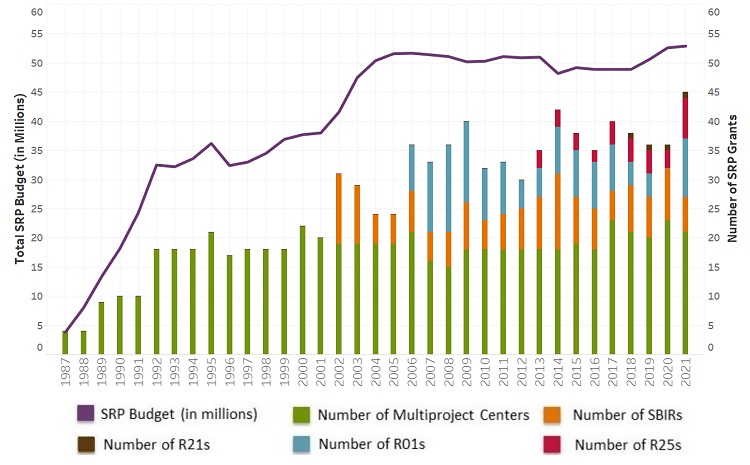
Congressional Appropriation
The SRP receives funding through the Appropriation Subcommittees on Interior, Environment, and Related Agencies. As part of the budget process, each year NIEHS annually submits a Superfund Congressional Justification to be included in the President's budget.
Subsequent to the release of the President's budget, NIEHS submits its Congressional Testimony to the appropriate appropriation subcommittee. The testimony updates the Congress on the status of the SRP and highlights recent accomplishments.
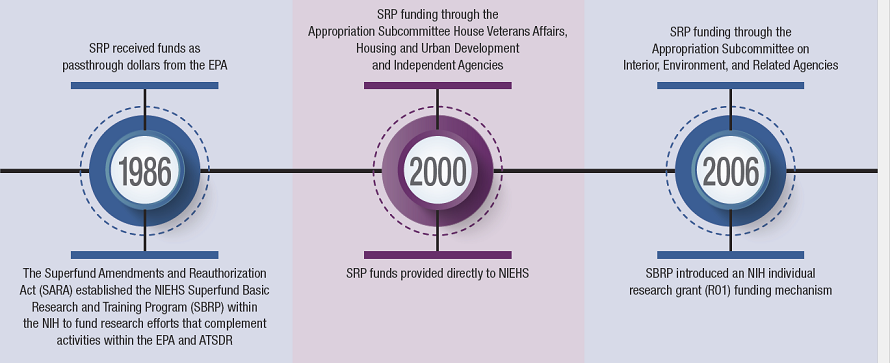
SRP Factsheets
Fact Sheets



